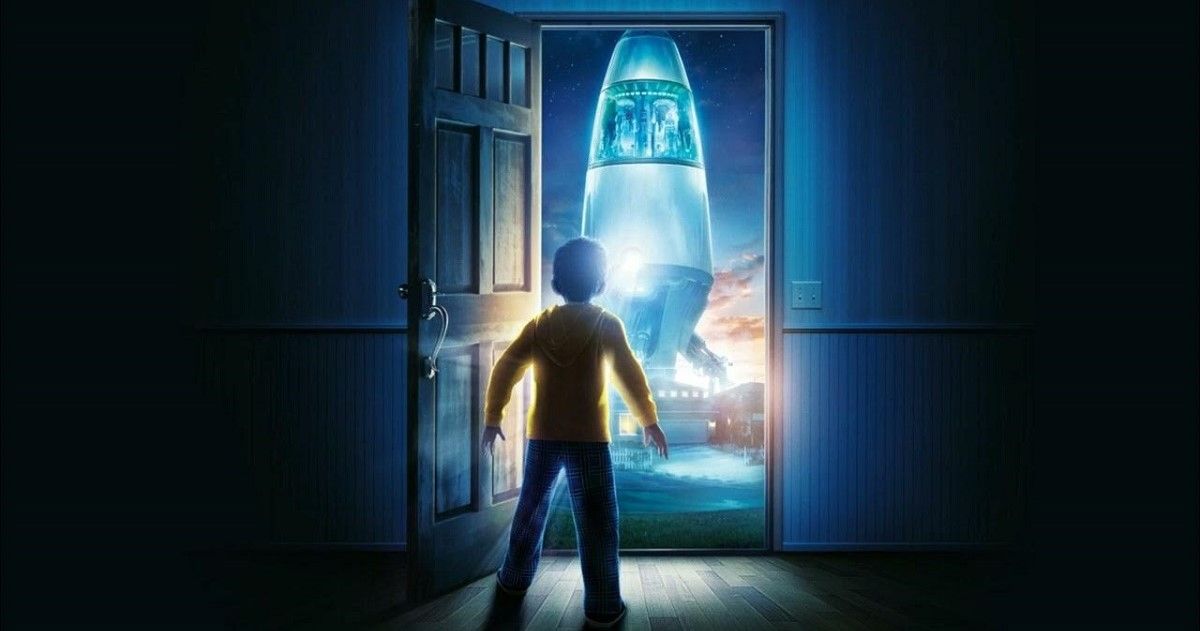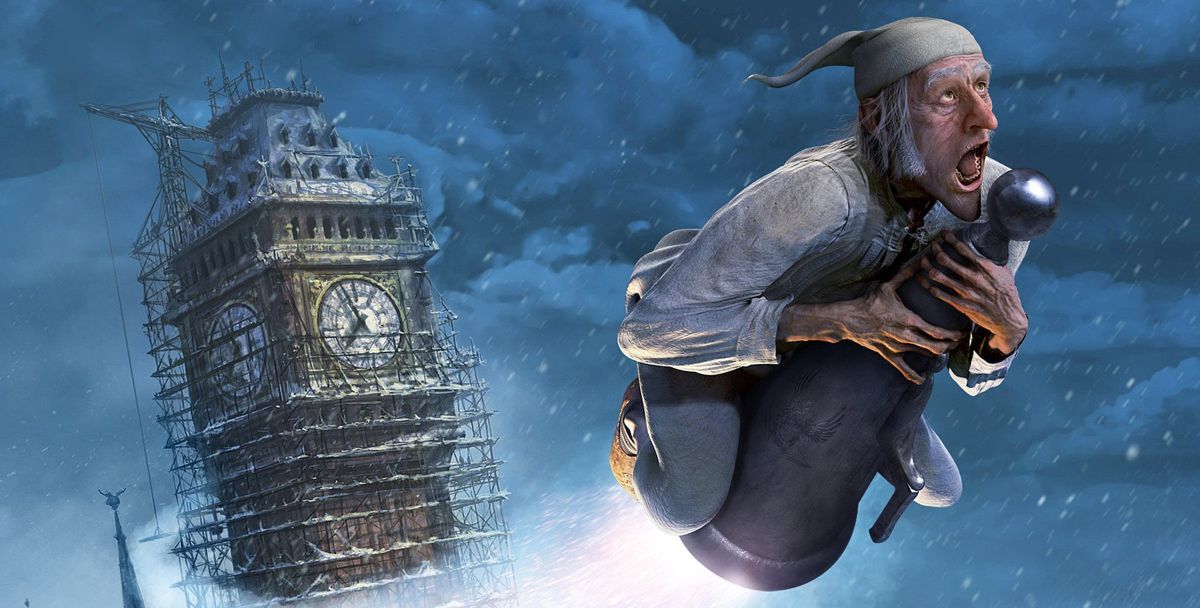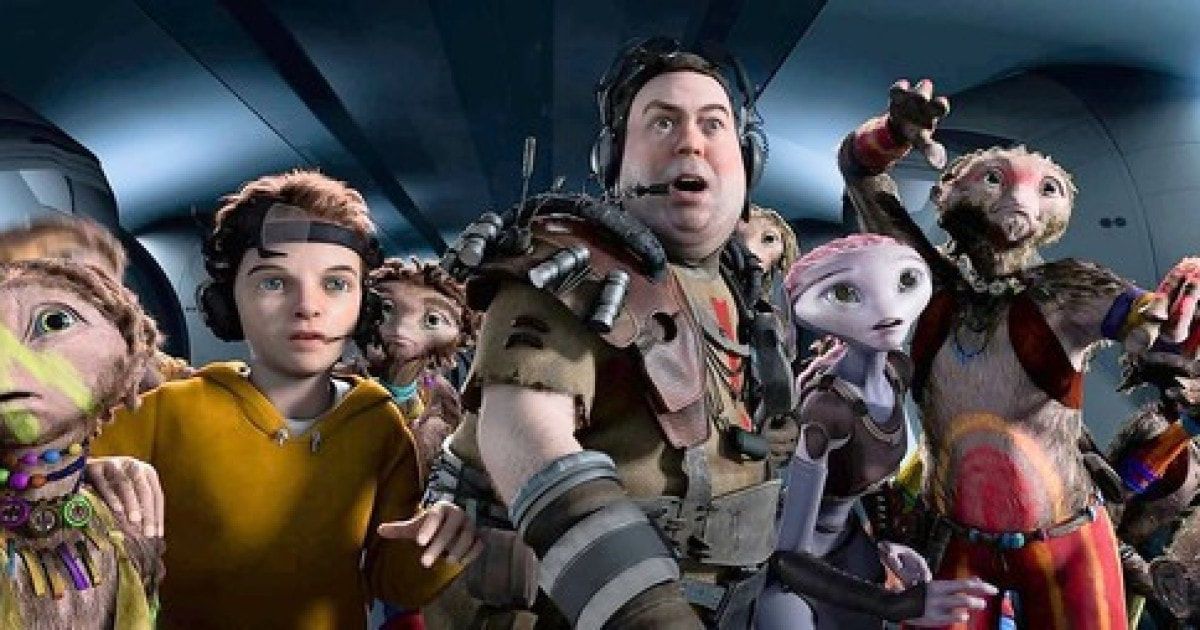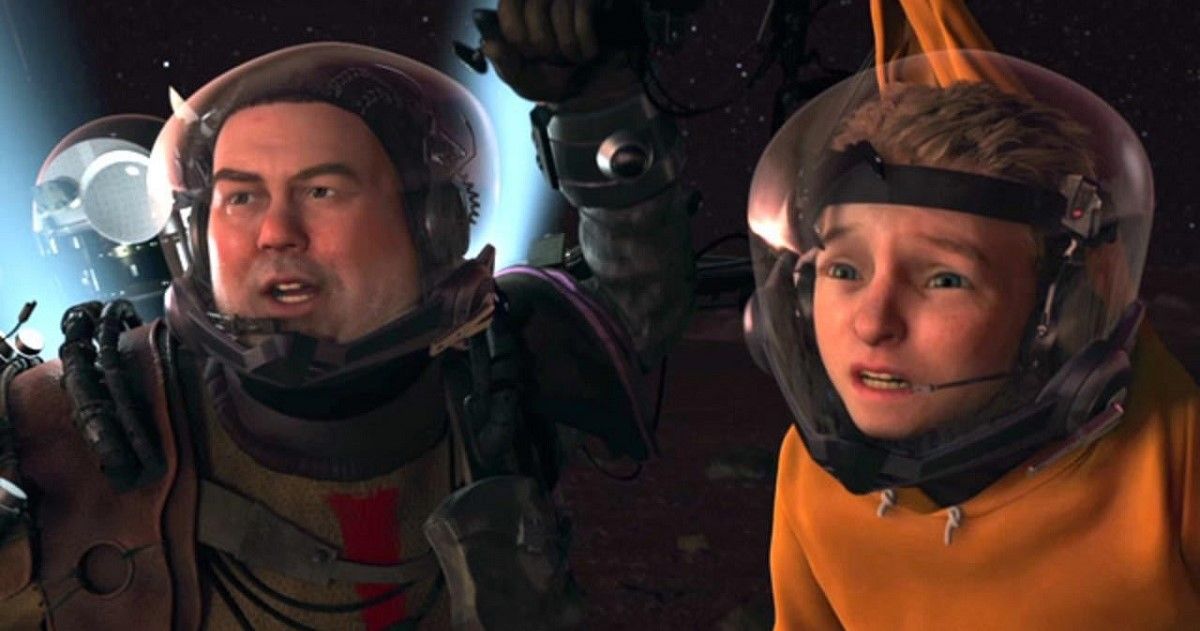It was at the dinner table roughly 15 years ago when the son of famous cartoonist and children's author Berkeley Breathed (of Opus and Bloom County fame) proclaimed his utter disgust for being served broccoli, sparking a heated debate between the boy and his mother, with the child exclaiming, "I wish I'd never had a mother!" Breathed's son had unintentionally sparked an idea for his father, who soon after went to work on his next children's book, Mars Needs Moms! Little did he know at the time, however, that his idea would go on to be the inspiration behind one of the largest box office bombs of all time.
Being allocated a large budget of $150 million by Disney and their newly acquired motion-capture animation department ImageMovers Digital, Mars Needs Moms was set for a March 2011 release, with established animation director Simon Wells (The Prince of Egypt) at the helm. The film hoped to utilize cutting-edge motion and face capture 3-D technology in order to give it a distinct and realistic look, an idea that executives at the time saw as "the future of animation."
Update May 23, 2023: This article has been updated with even more information about Mars Needs Moms' box office and the long-lasting impact it had on Disney.
It seemed the future had other plans in mind, however, as the film was a massive financial disaster that made back only $39 million of its budget, equaling about $111 million dollars in losses for Disney, not including the rumored $60 million spent on advertising. Over a decade since its release, the movie has largely been forgotten by nearly everyone. Strap in for a history lesson and learn the story of Disney's most costly misstep to date. This is the story of one of the biggest box office bombs; Mars Needs Moms!
The Future of Animation
ImageMovers were no naive new startup by 2011 and, in fact, had a decent collection of films under their belts by the time Disney came along. They began in 1997, being founded by director Robert Zemeckis (Back to the Future) and pioneering the use of motion capture animation in films, creating some well-received hits of their own, including the beloved holiday classic Polar Express. The success rate of ImageMovers repertoire caught the eye of Disney, who kept its finger on the pulse of any new advancements in the world of animation, and together the two companies created the joint venture ImageMovers Digital and produced their first fully motion-captured film A Christmas Carol in 2009.
Being a generally well-liked and enjoyable adaption of the classic Dickens tale, A Christmas Carol raked in about $125 million in profits alone, becoming a decent success for the new studio; its bizarre animation divided audiences and critics, though, with some thinking it was just too deep of a trip down the uncanny valley. Despite its success, Disney remained unimpressed, expecting much more of a splash out of what was meant to be the ultimate 3-D animation game-changer.
ImageMovers Digital was promptly shut down in 2010 after the release of its second and final film, with Disney execs getting cold feet on the entire deal, as well as feeling the effects of an economic recession at the time. Before the studio could fully shutter its doors, its second and final production was still underway, and with the company already turning its back on the whole concept, the unfortunate truth for Mars Needs Moms became clear -- it was doomed from the start.
Mars Needs Moms Bombs At The Box Office
Mars Needs Moms was released to theaters on March 11, 2010, in Disney Digital 3-D, IMAX, and RealD 3-D formats. 3D movies were having a revival after Avatar, and family films like Alice in Wonderland, How To Train Your Dragon, and Toy Story 3 had done very well at the box office thanks to the format. Given how well The Polar Express did in re-releases in 3D, it sounded like a winner. It just wasn't the case with this film, sadly.
Mars Needs Moms opened number five at the box office in its opening weekend with an abysmal $6 million. It was easily beaten by the two new releases that weekend, Battle Los Angeles and Red Riding Hood, which took the number one and three spots, respectively. Family audiences instead turned out for Rango, which opened the week prior and held the number two spot. By its fourth week of release, Mars Needs Moms was not only out of the domestic Top 10 but also had fallen to number 20 as theaters quickly cut the number of theaters down from 2000 screens to just 701.
General audiences and critics criticized the look of the film, notably the hyper-realistic but dead-eye expressions of the characters that had been criticized as far back as The Polar Express in 2004. After seven years and films like Monster House, Beowulf, and A Christmas Carol not showing any improvement, family audiences rejected Mars Needs Moms right out of the gate. What little audience remained after seeing the grotesque promotional material would go on to pan the movie for being incredibly difficult to sit through. Critics chalked it up to the film's visuals being in the "uncanny valley," close to realistic but just enough away to look off-putting and uncomfortable. The most nightmare-inducing aspect of all was the design of the Martians, who possessed eerily large human eyes and mouths, with large teeth and no nose.
From Page to Screen and Author's Reaction
The overall story maintained much of the same narrative beats and themes as the original book, making necessary expansions to meet a feature-length film's running time. The movie follows a young mischievous boy named Milo (named after Breathed's own son and inspiration) who spends his time giving back talk and taking his mother for granted. When Martians come to abduct Milo's mother and bring her back to their home planet, he sneaks aboard and goes on a rescue mission to bring her back to Earth, all the while meeting bizarre Mars inhabitants along the way.
The film was not for the youngest children right out the door since it dealt with a rather creepy storyline about a mother who would be killed because her child had wished her away. The aliens wanted her memories but not her, so they planned to kill her after extracting her memories. The child, Milo, meets another adult-like child who has also lost his mother to the aliens long ago. This poor guy has been living in the basement of the alien's existence since, and once he finally shows his face to help Milo, is sentenced to death. Death is not new to Disney films, but this exact type of death just didn't really sit right with many parents.
Characters were redesigned with an emphasis on creating realistic-looking people and settings, a decision that ultimately ended up sabotaging any potential success of the project. ImageMovers Digital chugged along as usual, despite their impending dismantlement, hoping that their project would stun audiences with its photo-realistic visuals and one-to-one human motion capture. Meanwhile, Disney was willing to take the inevitable financial hit and move on, their hopes being for it not to leave too much of a dent. Unfortunately for both parties, all hopes would be crushed upon release.
Berkeley Breathed, the original creator of the Mars Needs Moms property, continued on to create more comic strips, and children's books seemed like the best way to shake off the damage, and thus, he returned to his long-retired Bloom County comic strip in 2015, which recently was announced to get an animated series that Breathered will co-write and produce. When asked by The Hollywood Reporter for his opinion of Disney's flop, the Pulitzer Prize-winning cartoonist simply drew an image of his original aliens looking perplexed at a poster depicting the alien designs used in the film. This is the greatest way the author could have explained his confusion as to what actually happened to the brilliant story he had written based on his own child.
The Fallout
Mars Needs Moms had some major cascading impact on various Disney projects. ImageMovers Digital shut its doors for the final time. Plans for Zemeckis' Yellow Submarine remake film were quickly scrapped. Zemeckis and Disney would later collaborate on the Disney+ remake of Pinocchio, which received negative reviews.
It is widely reported that Mars Needs Moms bombing at the box office scared Disney and was responsible for them changing the name from John Carter of Mars to just John Carter. Notably, John Carter would be another Disney movie that opened on the second weekend of March that was another legendary box office bomb.
While all participants involved seemed to have moved on to bigger and better things, Mars Needs Moms will always remain in the back of many animation and film fans' minds, and not just because of the horrific visuals. It's not often that a movie bombs hard enough to shelf an entire animation style, being one of the last fully motion-captured films released since 2011 and managing to turn off whoever was left wondering if it really was the "future of animation" or if it was just an exciting new process that wasn't yet capable of achieving what it set out to do. For those looking to enjoy the story of Mars Needs Moms, the age-old expression rings truest here -- the book was much better.





